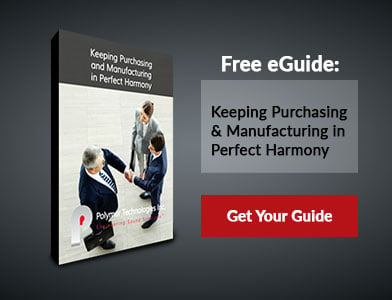Noise and vibration production is a major problem encountered by companies that utilize appliances in their workspaces. Appliances that produce significant vibrations can include any and all products with mechanical parts—generators, kitchen appliances like blenders, offices appliances like printers, and so on. Vibration is distracting, uncomfortable, and in some cases, unsafe for workers. It is one of the most common reasons companies will come back to manufacturers with complaints or request changes to the design.
When designing a product, consider how it will be used
When manufacturers design appliances, they need to take into account how those products will be put into practice. If a company makes the decision to use a product you manufacture, you don’t want them to later encounter issues that make them rethink their support of your product. Therefore, you should always consider the uses of the appliances you manufacture—in what kind of environment will it be implemented, and does that environment have specific concerns about noise and vibration?

The first consideration is whether an appliance will be used indoors or outdoors. Outdoor use gives you a lot more leeway with your design because the noise and vibration is not trapped inside a space. Sound equipment for concerts and other outdoor entertainment must find a way to be noisy despite that vibration diffusing into the air—but with most other types of equipment, the goal is to limit sound, not increase it.
Acoustic concerns in office environments
Many products will be used in indoor workspaces where people must be able to focus on their jobs. In an office, acoustical comfort is crucial for a productive work environment. If employees are too distracted by noises made by printers and copiers, decision makers may opt for quieter models in order to maintain an environment where work gets done and thus money is made. Noise and vibration is particularly problematic if employees’ jobs involve being on the phone a lot and listening to customers.The recent trend of the open office has made it so many workers cannot simply shut their office doors to drown out noises, meaning they may be working in the same space as noisy appliances that share the work area.
Limiting vibration in food service establishments
The office isn’t the only work environment where vibration is a concern. Some establishments have certain acoustic limitations that only serve to enhance vibrations created by machinery and other equipment. For instance, kitchens in food service establishments are designed with many hard, reflective surfaces that are easy to clean but terrible for acoustics. Problems arise when a noisy blender crushing ice for frozen drinks gets in the way of employees hearing orders or customers carrying conversations with one another at cafes.
You can’t control the environment, but you can control the design
The office and the kitchen are examples, but they aren’t the only places where appliances that create vibration can be destructive to businesses. Depending on where a product will be used, manufacturers of equipment need to create a product that minimizes vibration as much as possible. After all, a manufacturer doesn’t have control over whether an office has an open layout or a kitchen has reflective surfaces. These building designs may be necessary for the business or they may not—there are many conflicting opinions regarding the open office—but either way, they are not factors manufacturers can change.
It’s also worth noting that you don’t only need to consider vibration when designing products for commercial use. For home use, regular consumers have certain expectations about the products they bring into their homes. They may not be as open to modifications like sound enclosures that don’t fit with their interior design preferences. No matter what, you can never disregard the concerns of the end user.






